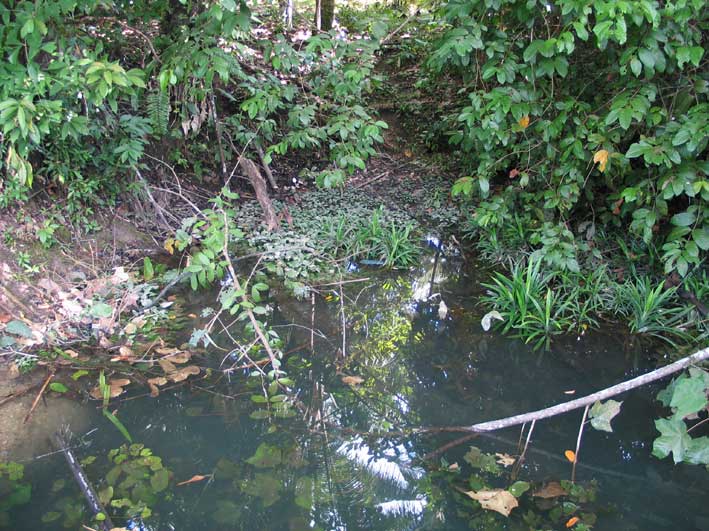 |
A single pond, fed by a spring in the limestone
area. In the background a patch of C. noritoi. Note the blue slipper besides it.
coll. Takahashi NT 0317
photo Takahashi |
|
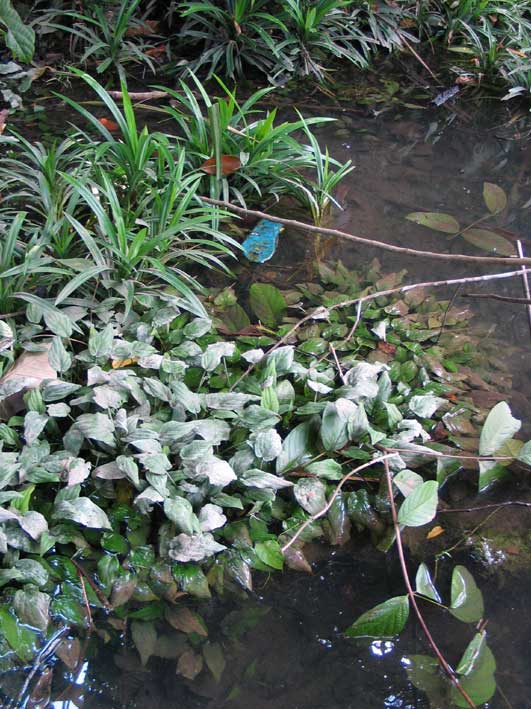 |
The same pond with a close up of the emersed
growing plants.
coll. Takahashi NT 0317
photo Takahashi
|
|
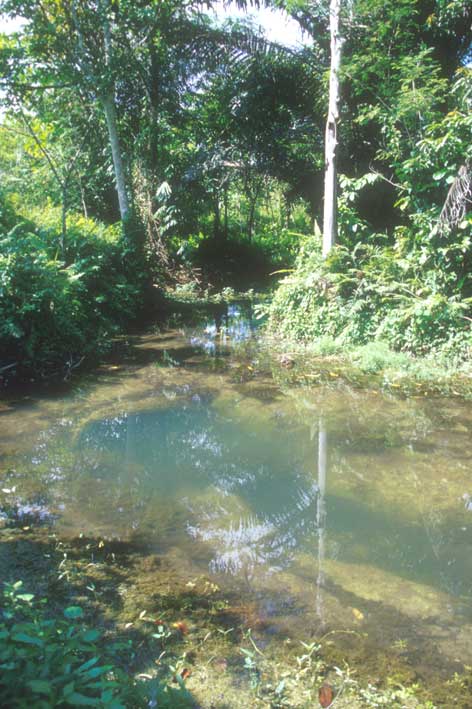 |
Another spring with the typical ´blue water´
what is common for these limestone springs.
coll. Takahashi NT 0401
photo Takahashi |
|
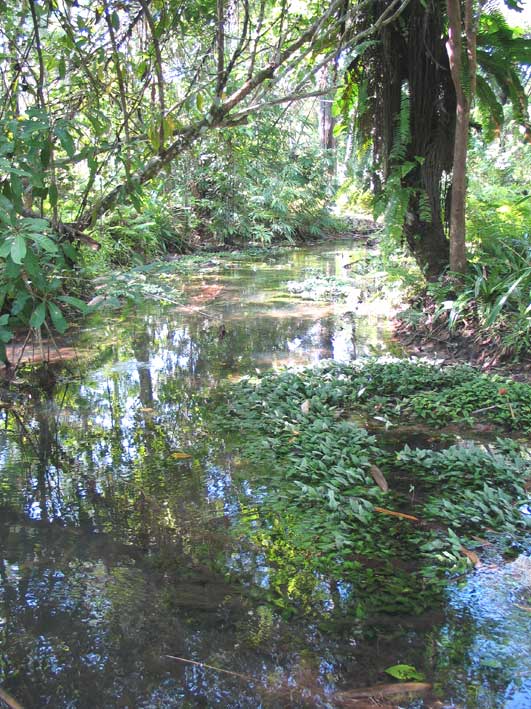 |
In the stream that runs off of the spring
(picture left) big patches of C. noritoi are found.
coll. Takahashi NT 0401
photo Takahashi
|
|
| |
|
|
|
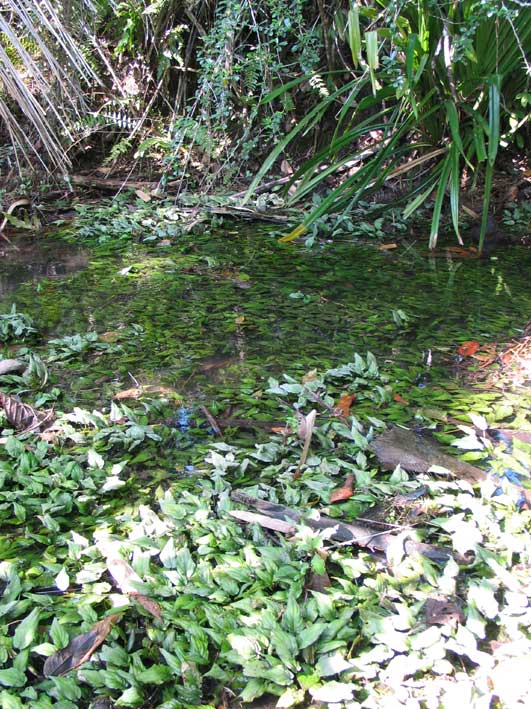 |
The transition of emersed to submersed stands of C. noritoi.
coll. Takahashi NT 0401
photo Takahashi
|
|
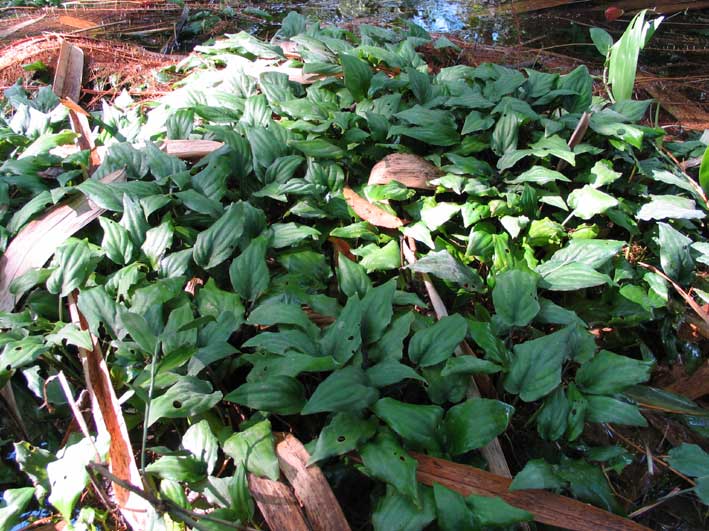 |
Note the pronounced furrows in the leaf of C.
noritoi, this feature remains also in cultivated plants.
coll. Takahashi NT 0401
photo Takahashi
|
|
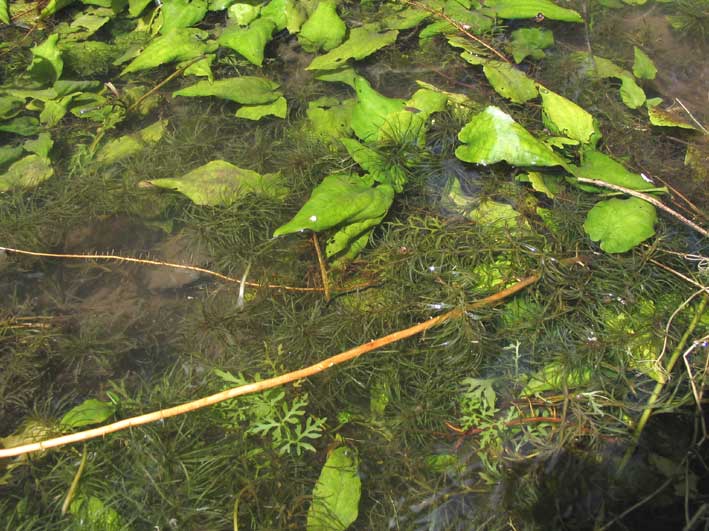 |
C. noritoi grows together with small
stands of Ceratopteris, Blyxa and Hygrophyla. In the stream also big
stands of Piptospatha are present.
coll. Takahashi NT 0401
photo Takahashi
|
|
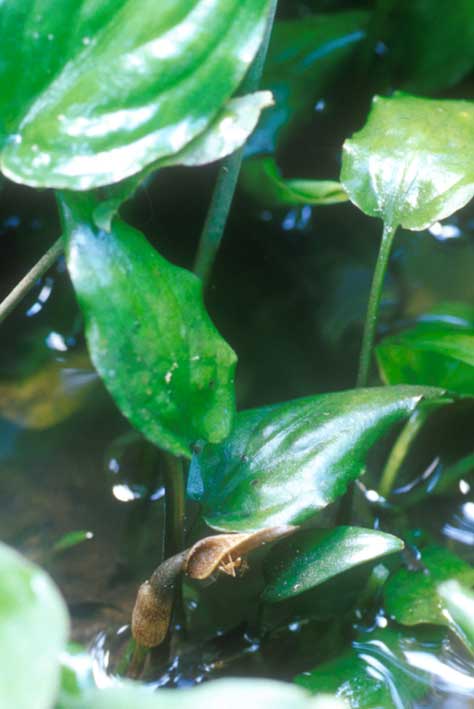 |
A semi emersed plant of C. noritoi. The
spathe stands on a long peduncle, up to 10 cm
coll. Takahashi NT 0401
photo Takahashi
|
|
| |
|
|
|
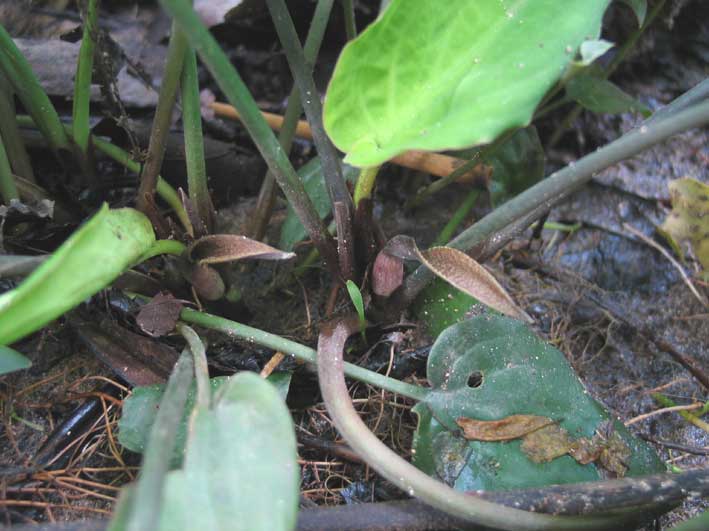 |
Semi-emersed plants with a spathe on a long (up
to 10 cm) peduncle.
coll. Takahashi NT 0401
photo Takahashi
|
|
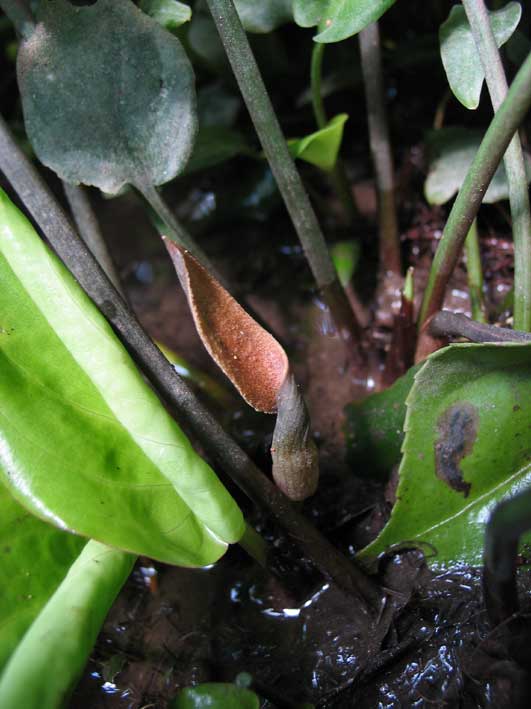 |
A more upright limb of the spathe with a more
orange color.
coll. Takahashi NT 0401
photo Takahashi
|
|
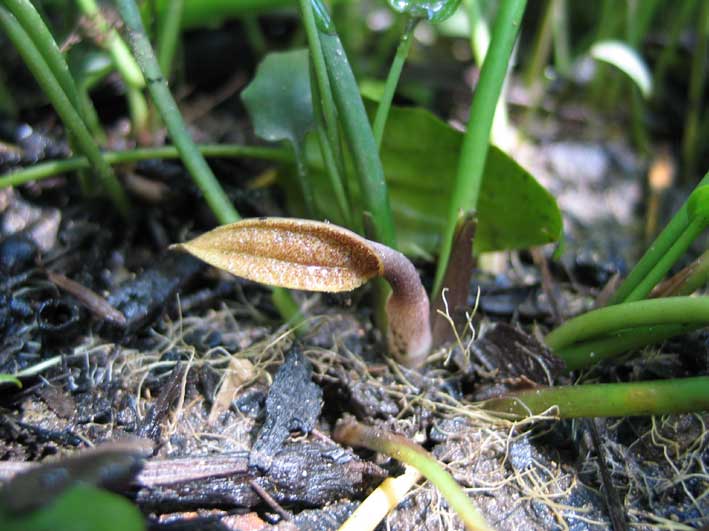 |
An emersed specimen with an almost sessile
spathe. Note the furrows on the limb of the spathe.
coll. Takahashi NT 0401
photo Takahashi
|
|
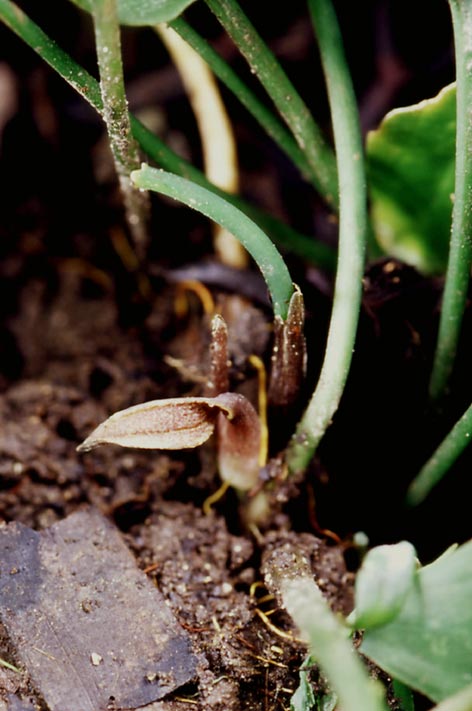 |
A spathe with an almost for 90 degrees bent limb
of the spathe.
coll. Takahashi NT 0317
photo Takahashi
|
|
| |
|
|
|
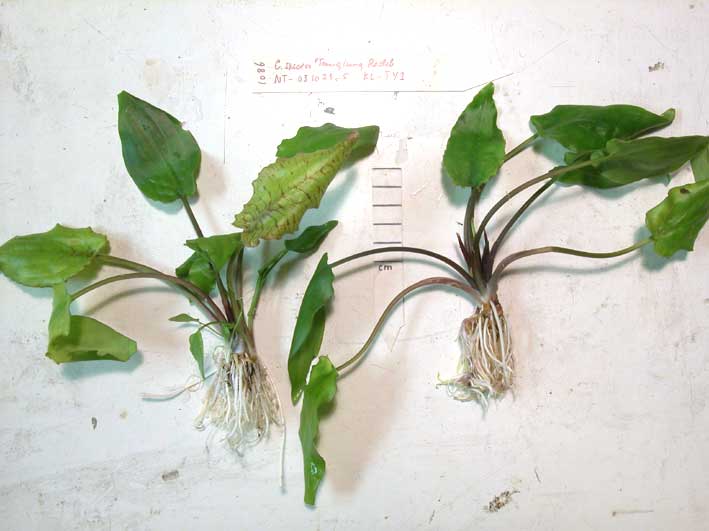 |
The following pictures are from cultivated
specimen. Note the brown markings at the lower side of the leaves on this plant. The ruler
is in cm.
coll. Takahashi NT 0317, cult B 1086
|
|
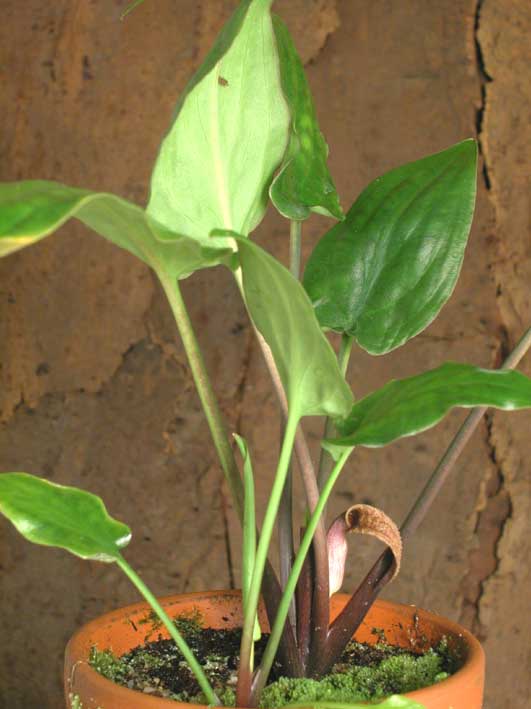 |
The leaves are grass green on the upper side,
the lower side is 'normally' pale green. The limb of the spathe is a bit bend sideward.
coll. Takahashi NT 0401, cult B 1085
|
|
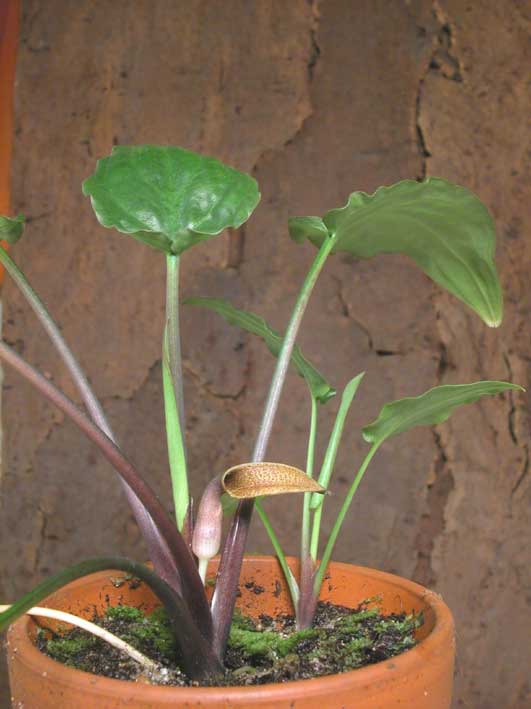 |
The leaf blade has furrows (depressions) along
the main veins.
coll. Takahashi NT 0401, cult B 1085
|
|
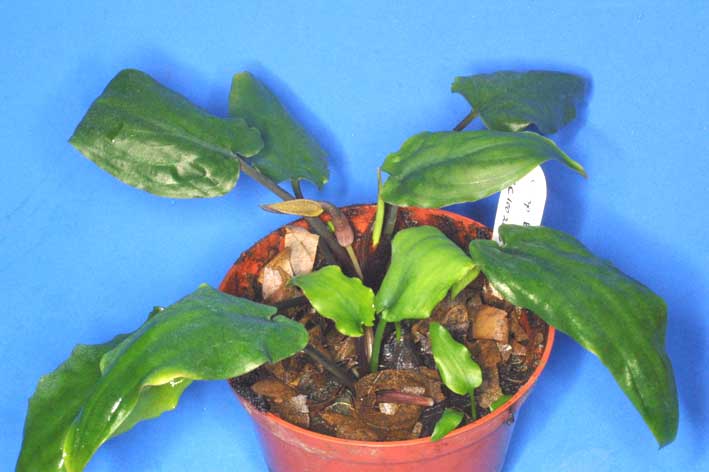 |
Also in cultivation, C. noritoi has a
long peduncle, what is seldom seen in emersed cultivated plants.
coll. Takahashi NT 0317, cult. SW 201
photo Wongso
|
|
| |
|
|
|
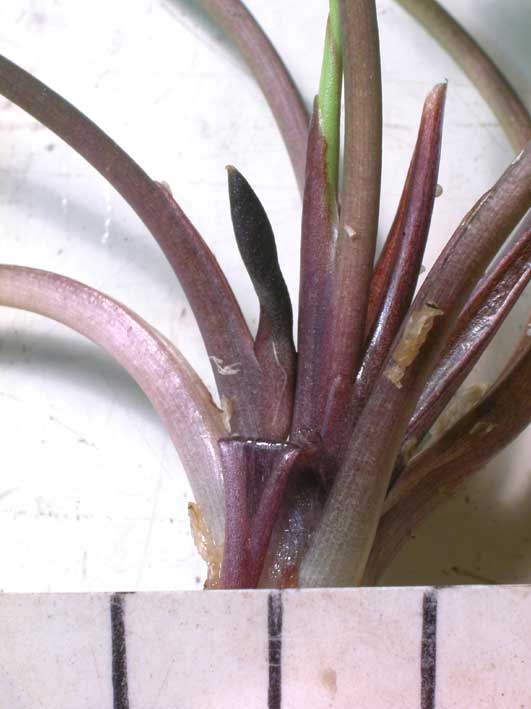 |
While ripening, the bud is erect and almost
hidden by the cataphyls. The ruler is in cm.
coll. Takahashi NT 0317, cult B 1086
|
|
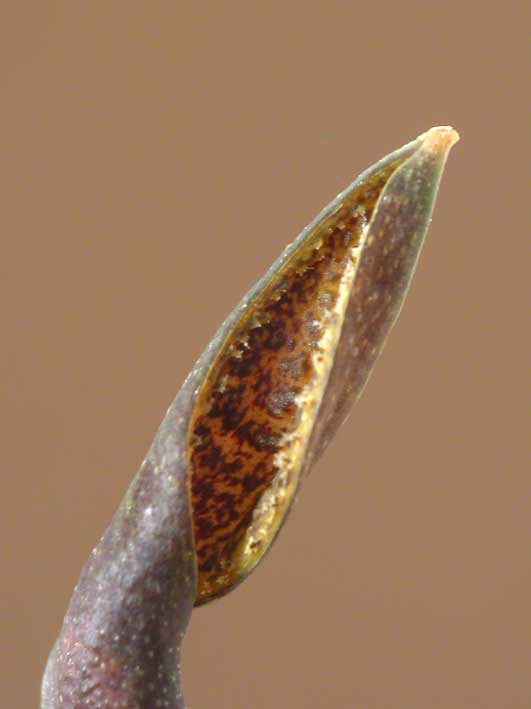 |
A freshly opened limb of the spathe. It will
bend 45 to almost 90 degrees.
coll. Takahashi NT 0317, cult B 1086
|
|
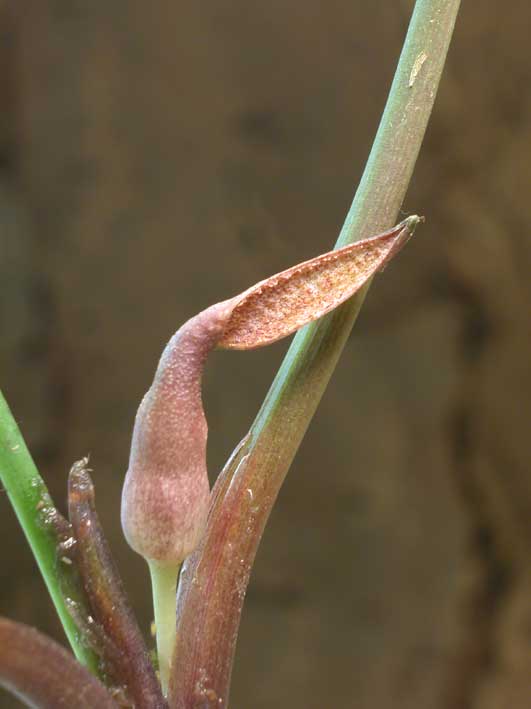 |
Note the slight constricted upper part of the
kettle.
coll. Takahashi NT 0401, cult B 1085
|
|
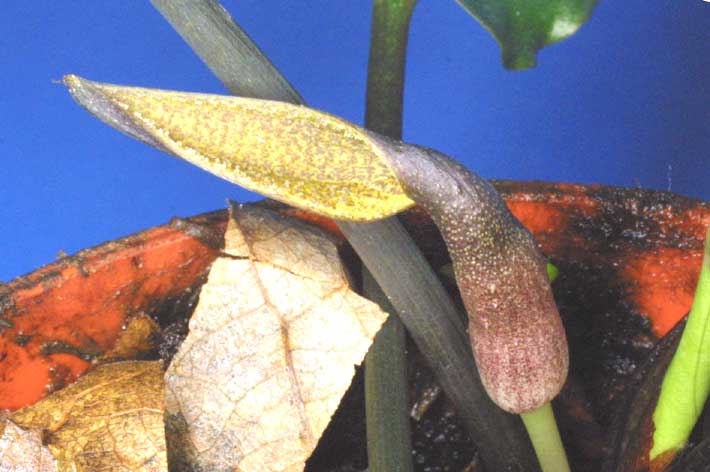 |
The color of the limb may vary from brownish to
orange to yellow.
coll. Takahashi NT 0317, cult. SW 201
photo Wongso
|
|
| |
|
|
|
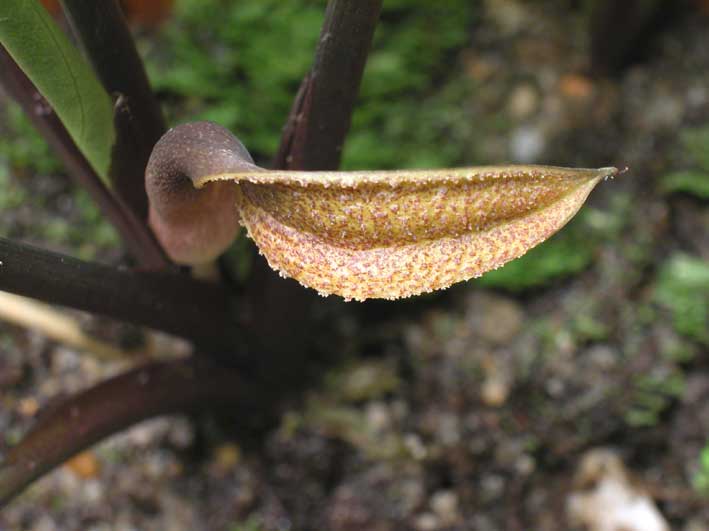 |
The surface of the limb of the spathe is covered
with fine brownish protuberances.
coll. Takahashi NT 0401, cult B 1085
|
|
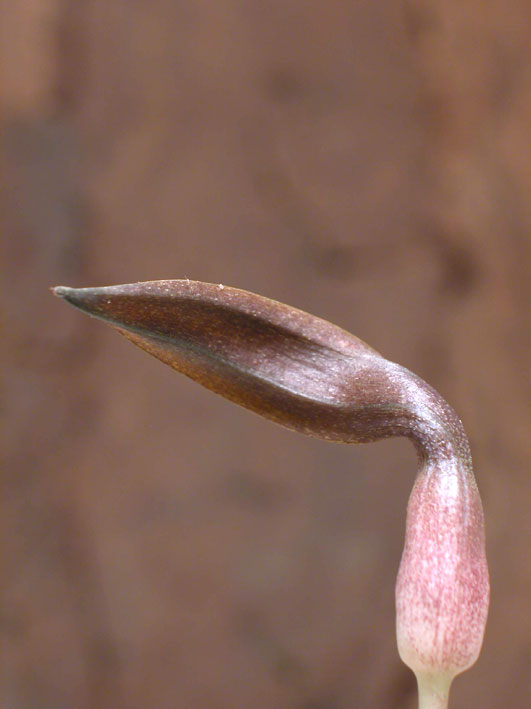 |
The limb seen from the back. Note the two
pronounced furrows almost over the full length.
coll. Takahashi NT 0401, cult B 1085
|
|
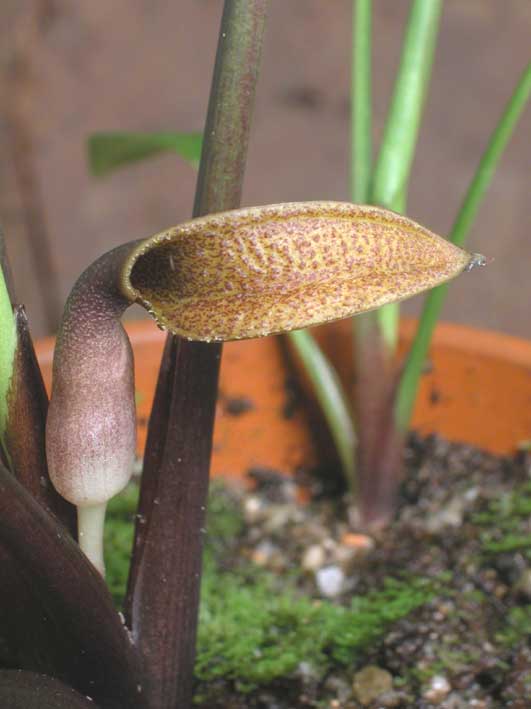 |
The furrows over the limb may be less pronounced
or even absent.
coll. Takahashi NT 0401, cult B 1085
|
|
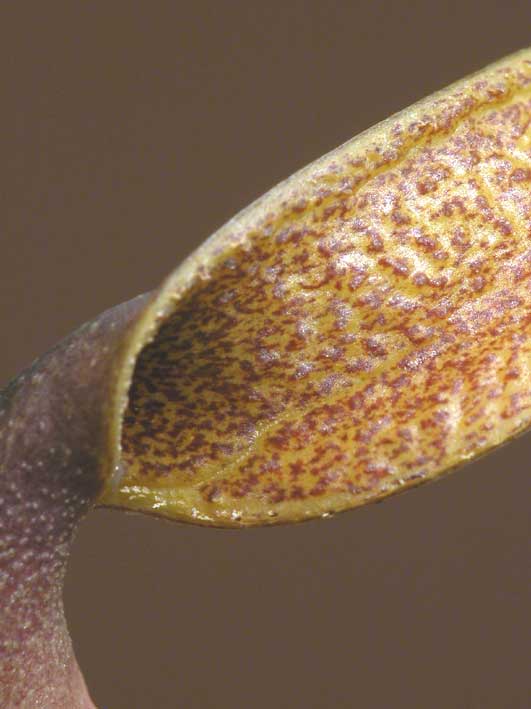 |
Detail of the limb showing brownish
protuberances on a creme background.
coll. Takahashi NT 0401, cult B 1085
|
|
| |
|
|
|
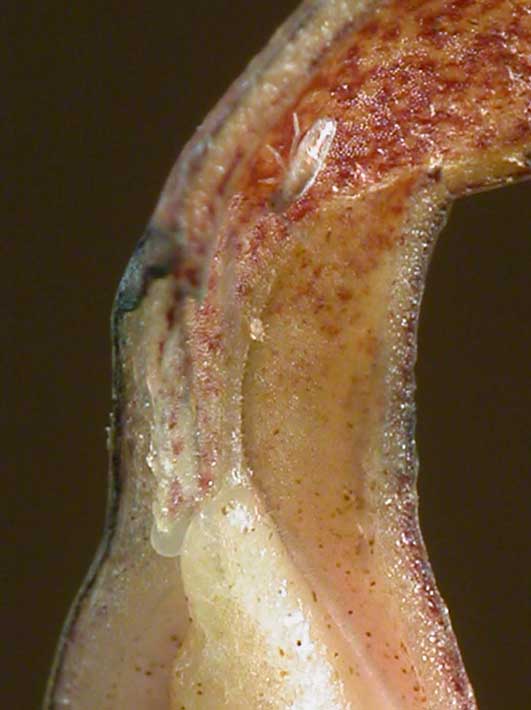 |
A length section of the transition of the very
short tube to the limb of the spathe. There is no collar.
coll. Takahashi NT 0401, cult B 1085
|
|
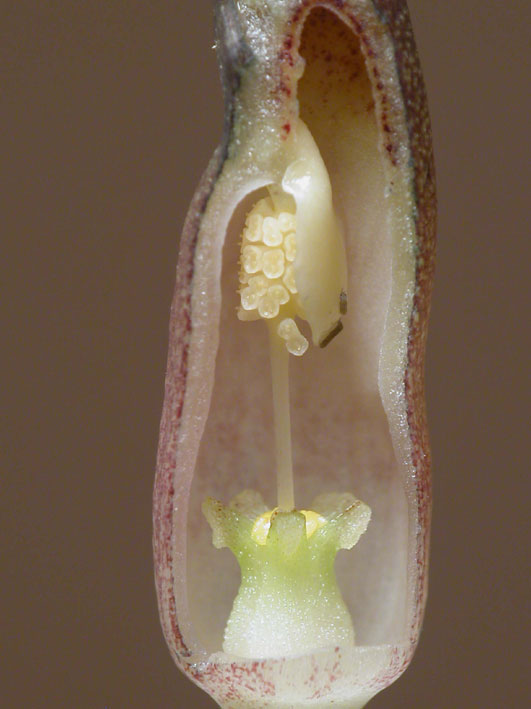 |
A length section of the kettle showing the
female flowers at the bottom and the make flowers at the top of the spadix. Note the
slight constriction in the upper part of the kettle.
coll. Takahashi NT 0401, cult B 1085
|
|
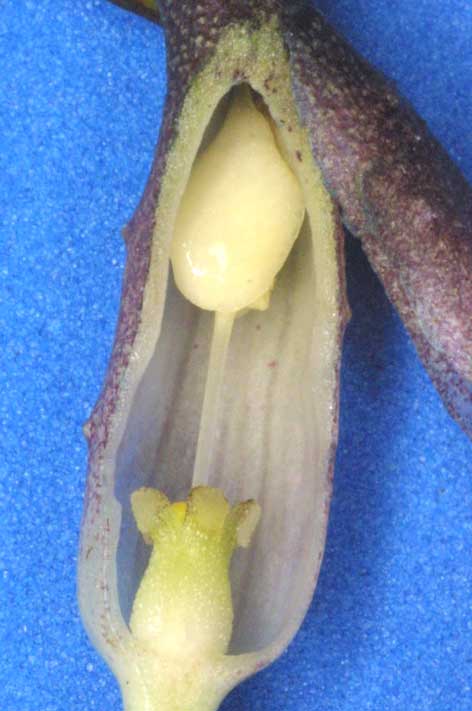 |
Less constricted and showing the (whitish to)
yellowish flap which covers the male flowers. Note the length furrows in the kettle wall,
normal in a spathe of a few days old.
coll. Takahashi NT 0317, cult. SW 201
photo Wongso
|
|
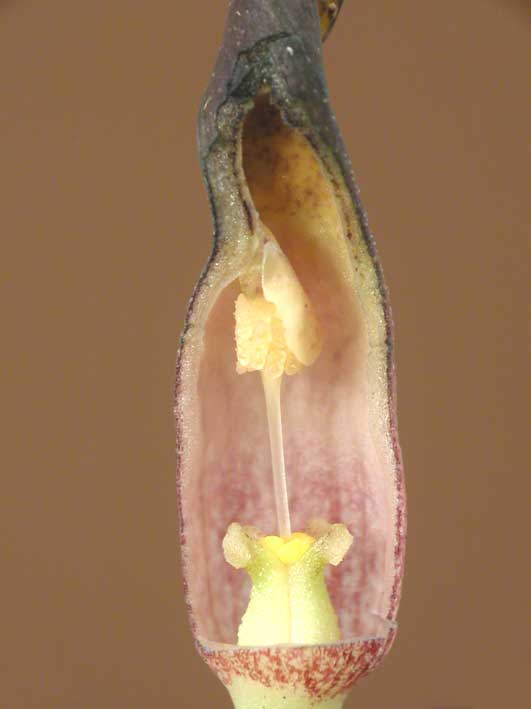 |
A hardly constricted kettle. The lower part of
the kettle may be densely red spotted.
coll. Takahashi NT 0317, cult B 1086
|
|
| |
|
|
|
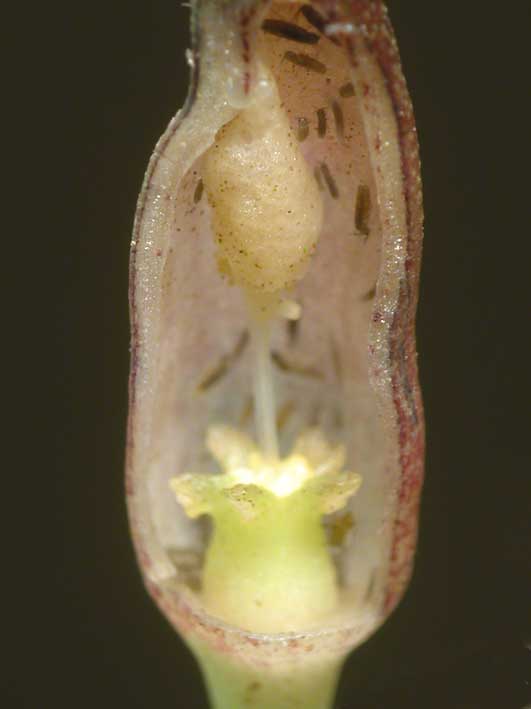 |
The styles with the stigmas bent down after
ripening. The small (greenhouse) insects apparently like the taste.
coll. Takahashi NT 0401, cult B 1085
|
|
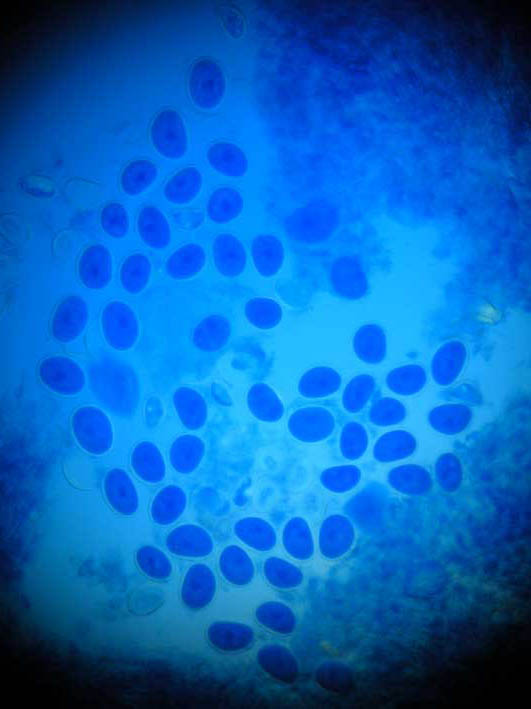 |
Stained pollen of C. noritoi show a
fertility of more than 90%.
coll. Takahashi NT 0401, cult B 1085
|
|
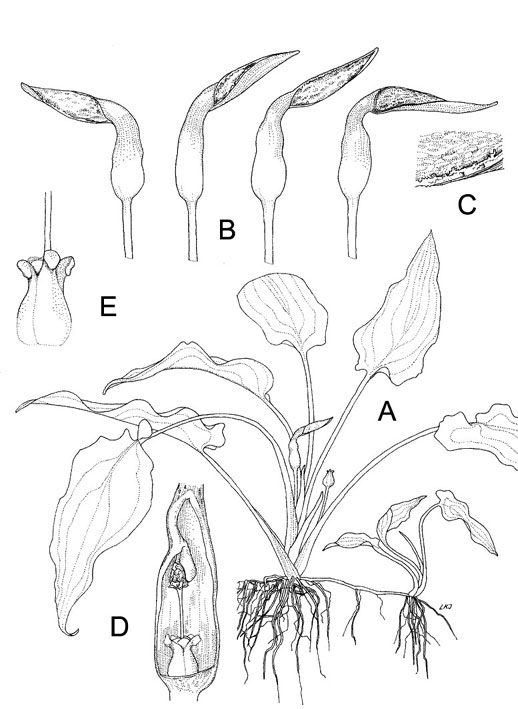 |
Line drawing of C. noritoi. Note the
relative long peduncle of the spathe.
coll. Takahashi NT 0401
drawing Line Jacobsen
|
|
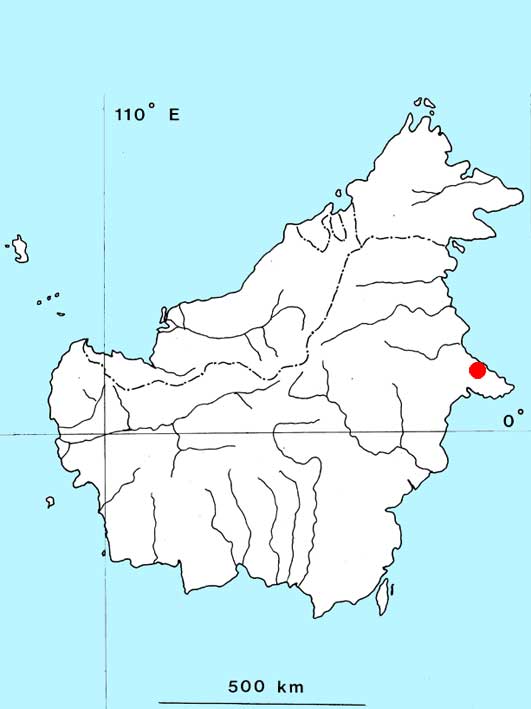 |
Distribution of C. noritoi in East
Kalimantan.
|
|
| |
|
|
|
At first glance C. noritoi has some resemblance with C. moehlmannii,
a native from the west coast of Sumatra, by its even green leaves and the oblique limb of
the spathe. Details of the spathe are however quite different and also the pronounced
furrows on the leaf of C. noritoi are distinguishing. The chromosome number of C.
noritoi is 2n = 34 in contrast to C. moehlmannii which has 2n = 30.
As C. noritoi grows in a limestone area, the water is very hard and the pH
reaches up to around 8. Surprisingly, it also grows well in a rather acid soil of
decomposed leaves of of the beech tree (Fagus sp.). For that reason it may be a
very good aquarium plant.
Updated October 2005 |
Literature.
- Wongso, S. & J.D. Bastmeijer, 2005. Cryptocoryne noritoi Wongso (Araceae),
eine neue Art aus Ost-Kalimantan (Indonesien). Aqua-Planta 30(3): 92-100.(document service)
|
|